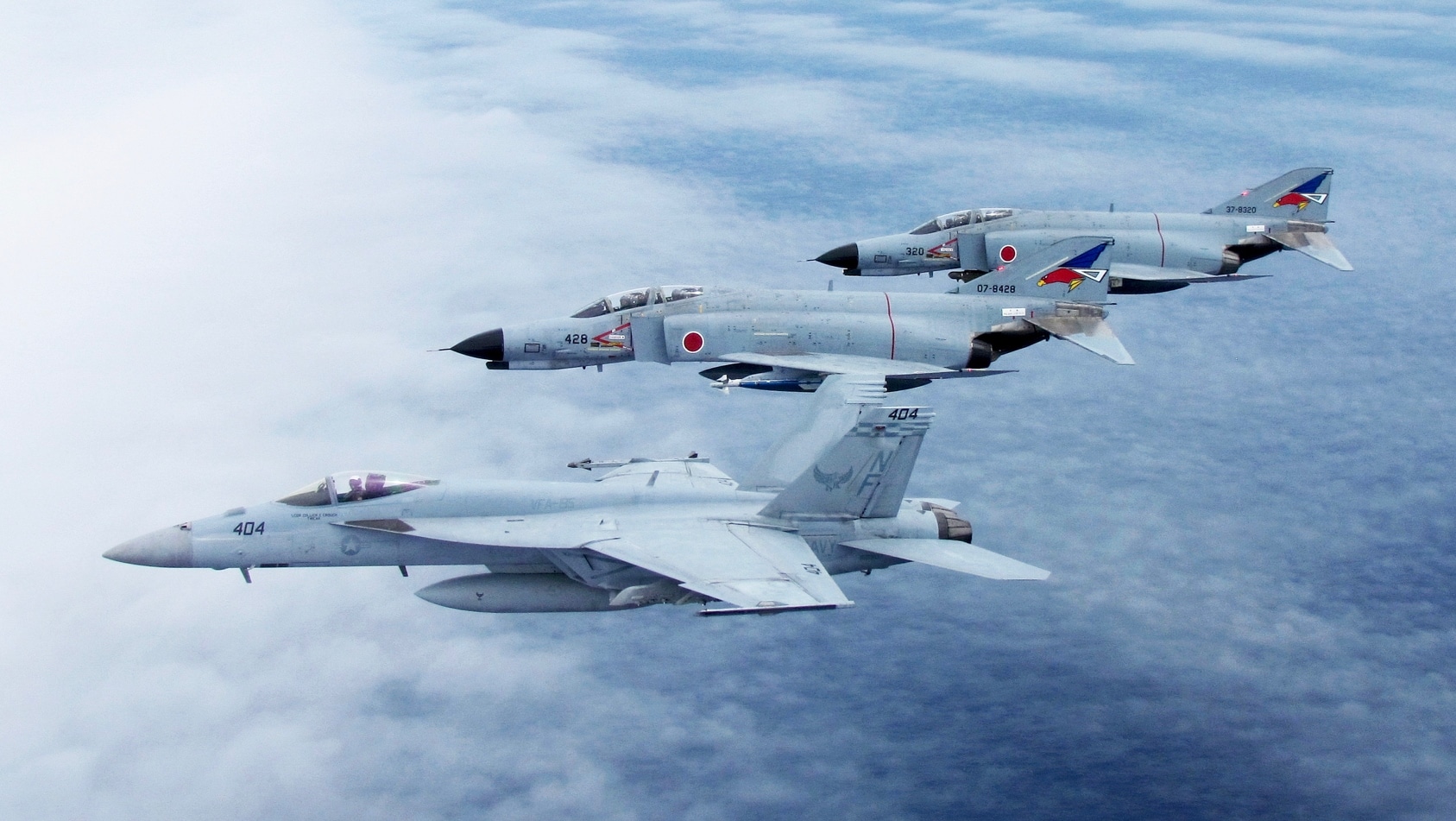Sometimes you just get a hankering for some Phantom phootage. Since the phabulous phighter was retired by the United States there are precious phew outlets for that kind of jones. Thankphully the Nihon Koku Jietai or Japan Air Self Defense Force (JASDF) still operates F-4EJ and RF-4EJ Phantom IIs from Hyakuri Air Base at Omitama, in Ibaraki Prefecture, Japan. This video, entitled “Paradise of Phantoms- Samurai Riders” was produced and uploaded to YouTube by 1-300. It pheatures hypnotic slow-motion phootage of Phantoms. Enjoy!
[youtube id=”SB8g_efiKMg” width=”800″ height=”454″ position=”left”]

Japan replaced their Lockheed F-104 Starfighter interceptors with F-4EJ Phantom IIs license-built by Mitsubishi Heavy Industries beginning in 1972. McDonnell Douglas built two F-4EJ prototypes which began flying during January of 1971. The remaining 125 F-4EJs were all assembled or entirely built in Japan. Japanese F-4EJs were not equipped with the AN/AJB-7 bombing computer system or inflight refueling equipment. Production of the F-4EJ ended in 1981 with the last F-4 variant built anywhere in the world.

The 14 JASDF RF-4EJs were all built by McDonnell-Douglas between November of 1974 and June of 1975. These examples were based on the United States Air Force (USAF) RF-4C variant. However, export restrictions on certain sensitive equipment resulted in Japanese-built radar warning receivers and other equipment being installed in place of the American black boxes normally installed in RF-4Cs. The JASDF 8th, 301st, 302nd, 303rd, 304th, 305th, and 306th Hikōtai (squadron[s]) have all operated the F-4EJ. The 501st Hikōtai operates the RF-4EJ.

The F-4EJ and RF-4EJ fleets were upgraded to improve their capabilities during the late 1980s and 1990s. F-4EJs received the more advanced APG-66 radar, improved defensive avionics, and the ability to deliver both ground attack and anti-shipping weapons. F-4EJs so upgraded were designated F-4EJ Kai. RF-4EJ Kai upgrades included an improved Japanese-engineered and built AN/APQ-172 radar system and radar warning receiver system. A total of 17 F-4EJs were also converted to RF-4EJ specifications but without internal camera systems, employing pod-mounted optical and electronic reconnaissance equipment.

